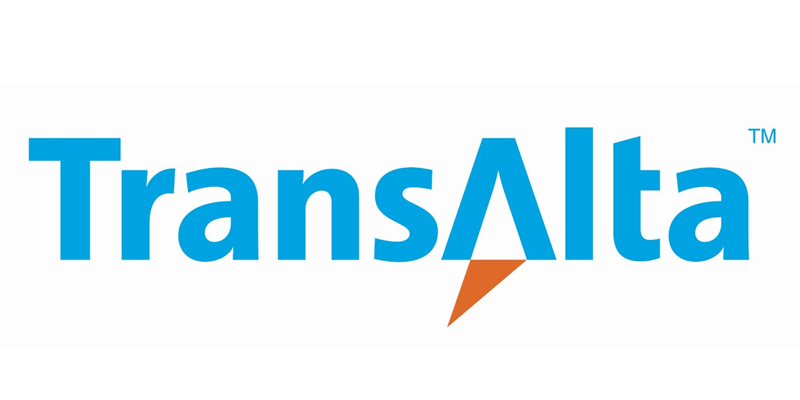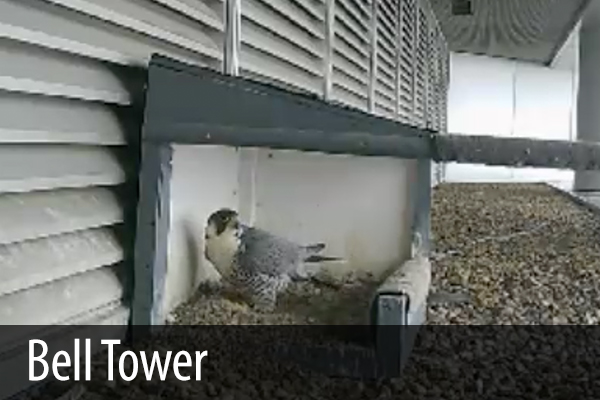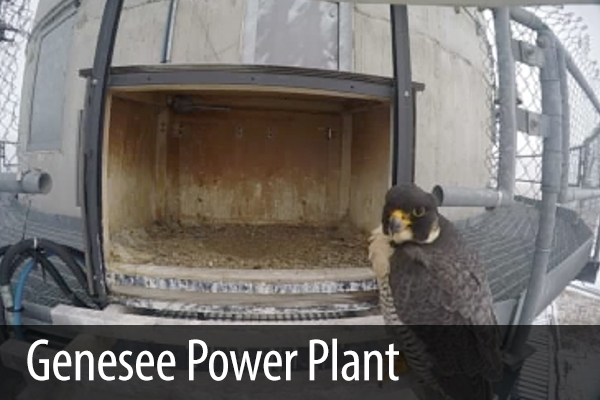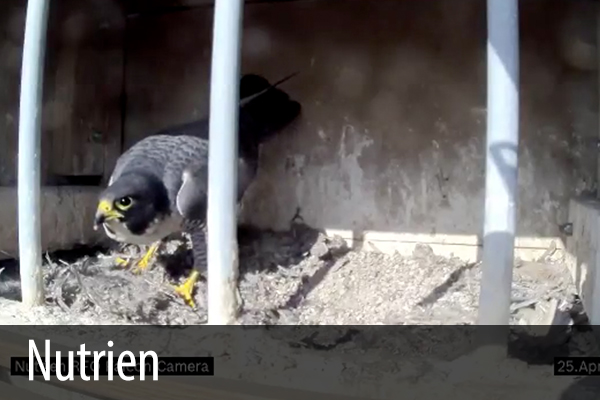Some peregrine chicks are missing!
Where did they go?
The peregrine falcon population in Canada has been managed intensively by both federal and provincial wildlife biologists for over 40 years. In 1970, when the species was facing extinction in most provinces because of DDT pollution, a decision was required as to whether to protect the few remaining pairs or to intervene and manage the population. Wildlife officials did the latter, taking young from the last pairs, housing them in the Canadian Wildlife Endangered Species Facility at Camp Wainwright, Alberta. Technicians at the facility were among those who pioneered the captive-breeding of the peregrine falcon and other raptors. The effort was so successful that captive-bred young peregrines were available for re-introduction experiments as early as 1975, when only three pairs of peregrines (all in Alberta) were known to exist in Canada south of the boreal forest and east of the Rocky Mountains.
The recovery of the peregrine in Alberta was guided by the Alberta Peregrine Falcon Recovery Plan. In that plan, the primary action item has always been to maximize the number of young peregrines to fledge successfully in the province each year. One of the ways this is achieved is to remove young peregrines from nests where there are chronically high levels of fledgling mortality each year (usually from collisions with buildings or vehicles). In all cases, these are nests in urban areas, like some of the nests featured on the webcams. Managed pairs will be left with at least one young, most will be left two.
The removed young are first moved to a breeding facility and are cared for by captive adults. At 38-40 days they are introduced to hack (release) boxes in a unique situation on the Pembina River. The two hack boxes are actually within the territory of a wild pair of adult peregrines with their own young. Just as the young from the wild pair are fledging, biologists release the young taken from city sites from the hack boxes. Peregrines have poor discriminatory abilities when it comes to recognizing their own young so defend and feed any and all young birds in their territory. Biologists supplement the situation with extra food; however, all the young will join in feeding chases with the adults where they can really perfect their flying skills.
This type of management achieves two main objectives. First, more young peregrines fledge, as there is extremely low fledgling mortality at the Pembina hack site. Second, young peregrines are released within habitat that is only now being re-occupied since the species was extirpated from the Pembina and North Saskatchewan River valleys in the 1960s. As peregrines, particularly males, often return to breed near areas where they first learn to fly, this is an excellent way of speeding the recovery of the population in historically occupied habitat.
The results are difficult to ignore. The peregrine population in Alberta has gone from one productive pair in 1970 to an estimated 80 pairs today. In southern Canada, the species has gone from three productive pairs in 1975 to several hundred. The species has returned to some man-made sites in Alberta and it has also returned to historically occupied nesting cliffs on the Bow, Red Deer, Pembina, Brazeau, Nordegg, and North Saskatchewan Rivers. Some of the individuals at these sites originated at the Pembina hack, including young birds moved from nests in Edmonton and Red Deer.




